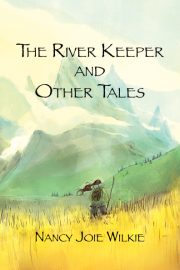Aphorisms for Writing Science Fiction
Literature is worth reading
even when you know how the story comes out.
Dramatic Structure
- Build the story around a theme. Literature explores themes — a proposition to be argued or some aspect of human experience to examine, such as emotions, places, times, crises, or events. Know your theme and stage only those events which advance or illustrate it.
- Observe dramatic economy. A story’s dramatic elements — words, places, characters, dramatized events — are all resources in which the author asks the reader to invest his time. For the story to work to its fullest, these must pay off: the reader’s investment in learning must be rewarded by understanding, enjoying, and appreciating the story. If the dramatic elements are unused or incompletely used, the reader may disengage.
- Maintain scale throughout. A story has a dramatic size — the scope of its characters, setting, and time sweep. When the story’s scale shifts from that established in its opening, the reader can become desensitized and disengaged. Many stories have an unintended inflation of scale as the author keeps seeking bigger scenes or emotions. A novel that begins with a day-to-day narration should end at roughly the same pace. A story that opens by showing us a single character’s emotions should end by focusing on the feeling of a single person (the same character or a different one).
- Character action must derive from internal imperatives. Character is shown best through action. If a character’s actions are inconsistent with his personality or environment, or if a character’s attributes are asserted but never demonstrates in actions observed by the reader, then the character loses credibility and the story loses tension.
- Point-of-view is a scarce resource. Stories are told from a point of view (POV). Unless the author is using the omniscient narrator who sits outside events (rare), in which case the narrator becomes a character, the POV will usually be vested in one character per scene. The POV character is the lens through which the reader will perceive all that goes on, and inevitably the POV character is infused with additional importance; inevitably the reader is more sympathetic to the POV character and will understand that character better than any others in the same scene.The POV character could be someone who
- faces crucial choices which cannot be staged externally
- observes best
- is the author surrogate, or
- is the reader surrogate.
Often the POV character is the protagonist; equally effective is a sidekick POV character who sheds intimate light on the protagonist (cf. any Watson or The Great Gatsby).
Choose the POV character carefully. It may change from scene to scene (sometimes within a scene), but is usually the most important staging decision the author makes.
- A story walks better on two legs. Few plot lines are so strong that by themselves they can carry the entire narrative. Much more frequently they require breaks for travel time or emotional pacing (either the characters’ or the reader’s). To do this without slowing the pace, the author can run a second story line and alternate his action between the two stories, just like a person walking on two legs, one moving, the other resting and anchoring.Often the story lines can become symbolic of larger-scale conflict, with the micro implying the macro and vice versa. Under the principle of dramatic economy, they must tie together, the more frequently and complexly the better, through character, setting, action, event, theme, or combinations of all these.
- The inner journey must match the outer journey. Unless actions involve characters about whom we care, they appear to the reader as meaningless running around. For us to care about the characters, they must be emotionally engaged in the action, and they must express through their behaviors the inner conflicts that are driving them to do what they. Essentially to any good story, therefore, is that the character’s inner journey (his change) is as important as his outer journey (the events he experiences), so that even if the character returns to the same place by story’s end, he has undergone so much that he is now a different person. (Think Frodo in Lord of the Rings, or Sarah Connor in either Terminator movie.)
- Link the out-of-whack event to the protagonist’s emotional disturbance. Ever since Aristotle writers have known the reliable formula for gripping action: Knock a character’s life out of whack and spent the rest of the story watching him try to get his life back into whack. For the inner journey to match the outer, the out-of-whack event must link with the protagonist’s emotional disturbance — something about the character’s world-view is destroyed early on, and the character is seeking to rediscover his own emotional equilibrium. As E. M. Forster said, The king died, then the queen died is a plot. The king died, then the queen died of grief is a story.
Making Scenes Work
- Increase immediacy. An author is always trying to create in his reader images so strong that the reader is mentally transported. John Gardner called this the fictional dream, a story so smoothly told that the reader absorbs the images as if seeing them before his own eyes. Immediacy is the degree to which the reader experiences events directly. It can be increased by:
- Showing rather than telling.
- Describing things with tactile, visual specifics rather than generalities.
- Peripheral characters who are fully fleshed out individuals rather than velour-shirted droids.
- Reward the careful reader. Readers are greedy: they will pay attention only if they are rewarded for doing so with all little cookies like apt phrasing, witty dialog, incisive description, humorous asides.
As for you, the writer, never forget the following. The reader is like a circus horse which has to be taught that it will be rewarded with a lump of sugar every time it acquits itself well. If that sugar is withheld, it will not perform.
Milorad Pavic, Dictionary of the Khazars - Punish the careless reader. Readers are also lazy: they will pay only as much attention required to give them the stimulus they crave. An author should create text so tight that the reader who skips two or three pages will miss something crucial to the story and will backtrack to reader it. That kind of punishment (making him re-read) will swiftly persuade the reader to remain engaged. Mysteries punish the careless reader, which is partly why they have such a faithful following.
- Hearsay is inadmissible. Immediacy is an emotional concept, not just a descriptive one. Conflict of communication between characters should be conducted directly between them, rather than through intermediaries, because each removal from the immediate dulls its impact and risks losing the reader’s engagement. Flashbacks and POV cuts are commonly employed principally to assure that if a character saw a crime or an event, the reader sees it the same way.
- Let the reader have his own emotions. Writers who lack confidence often overkill their situations by not only staging events but also telling the reader how to react to them. This is invariably a mistake: readers force-fed feelings either become lazy (“Why bother to pay attention? The author will wake me up in time.”) or rebellious (“Hey, even Adolf wasn’t as bad as that”). Writers more confident — of themselves and of their readers — relay events and let the reader feel things for himself. Readers who feel for themselves also become more engaged.
- Everything happens in the eternal Now. Immediacy also means immediacy in time. The ideal narration occurs in the real-time present, with the reader experiencing everything simultaneously with the characters. This also raises the stakes for readers and tends to reward careful ones.Moving away from the eternal Now (for instance, a character remembering a past event, a character narrating a past event to another character) weakens immediacy because the reader knows that the event is in the past, therefore it is fixed and unchangeable. Sporting events are much more exciting live than on tape delay.) Wherever possible, adjust time sequences so that events occur directly before the reader’s eyes.
- Use the specific to imply the general. We observe only specific things; from them, we infer generalities. In the same way, an author who wishes to imply a general phenomenon will usually do better to stage a specific thing — an incident, a phrase, a character. By contrast, describing generally defuses immediacy, because we have no specific scene to attach the action, and nothing to visualize. The micro also easily extrapolates to the macro: Joseph Heller put all of World War II on the island of Pianosa, Mervyn Peake saw the world through the castle of Gormenghast; and then there was Forrest Gump.
- Onstage sex is a winner. We are talking here not about biomechanics but fundamental emotional contact. Staging sexually charged encounters between focus characters invariably makes them more human, more accessible to the reader. Sex also reveals character: among human beings, intimacy and sex are tightly correlated. Sex is intimate personal knowledge not generally shared. Most of our words for closeness have sexual connotations, from the Bible’s “And Adam knew Eve.”
You have to decide which drum you’re going to beat: sex or death.
Robert Frazier.
Improving the Prose
- Fill descriptive holes. Much fiction suffers from tactile deficiency because its author is concentrating so hard on moving characters around that he forgets to stage their environment. Description, the vegetables of a reader’s diet, must be integrated throughout the story and the action. Every scene, every sentence, contains places where adjectives and adverbs may be dropped without adding pad words. These locations — descriptive holes — should generally be filled.For instance, “The boy hit the ball” contains three descriptive holes: “The <adjective> boy <adverb> hit the <adjective> ball.” In each spot, the author can slide in a piece of description essentially for free.
- Describe with nouns and verbs. Although adjectives and adverbs strengthen immediacy, overdependence on them leads to forsoothly writing and psychic overload in the reader. Even better than using descriptive modifiers are descriptive nouns and verbs. English is a gigantic language with a myriad of words, each with its own shades of meaning. Find the best noun and verb and use them.
- Descriptors should be sensory. Descriptors are either sensory (blue, sour, loud, smooth, putrid) or internalized (sad, dour, proud, uncouth). When in doubt, sensory descriptors are better: they increase immediacy and they use the specific (“His hands clenched”) to imply the general (“He was angry”). Internalized descriptors also tend to editorialize, which prevents the reader from feeling for himself and thus induces in the reader either laziness or rebellion.
- Don’t describe nulls. This is really a subcase of Point 16, filling descriptive holes. Avoid using words that saying nothing. “He picked up one of the rocks” shrinks to “He picked up a rock”. Or consider this bit of dialog:
“You killed my brother!” she screamed at him.
He said nothing.
“And you’re trying to kill me!”This tiny snippet has two nulls: “at him” and “He said nothing.” The latter is particularly egregious, because the author had a free opportunity to give us an emotional reaction (“His eyes flickered in anger”) or a description (“The mantelpiece clock ticked loudly”) and did neither because he was concentrating so intently on the dialog.
- Vary your syntax. A photograph is conveyed into newsprint via a pattern of individual dots. A story is conveyed to a reader via a pattern of individual words and sentences. Textual variety is important; without it, the reader becomes bored and irritable without necessarily perceiving why. Noun-verb-object structure is fine and should dominate, but if repeated becomes a club which can be used stylistically (Hemingway, Pinter) but more often just bludgeons a reader insensate.
- Vary your vocabulary and referents. A scene typically uses only a few building blocks — characters, places, objects — and then manipulates them extensively. The author thus refers to the same things over and over. These multiple references are by themselves a kind of descriptive hole; by changing the noun used to identify the well-defined object, the author can slid in additional information. If Policeman Jones is later addressed as “Bob” or described as the “chunky cop”, we learn bit by bit.
- Choose metaphors appropriate for their environment. Metaphors are a special kind of extended, custom-generated adjective; they should be chosen to enhance and harmonize with the overall universe. A detective would not squint “like a near-sighted grandmother”, he would squint “as if trying to pick a suspect out of a lineup.” Taken to extremes, of course, this become camp: “She was tough as a blackjack and sharp as a stiletto.”Even important than harmonizing metaphors is avoiding obvious metaphoric clash: in a romance, the hero should not run toward the heroine “as quickly as a stampeding bull.” Block that metaphor!
This article is Copyright. Reproduction and distribution specifically prohibited. All rights reserved. Reprinted here with the author’s permission.

 by
by 
